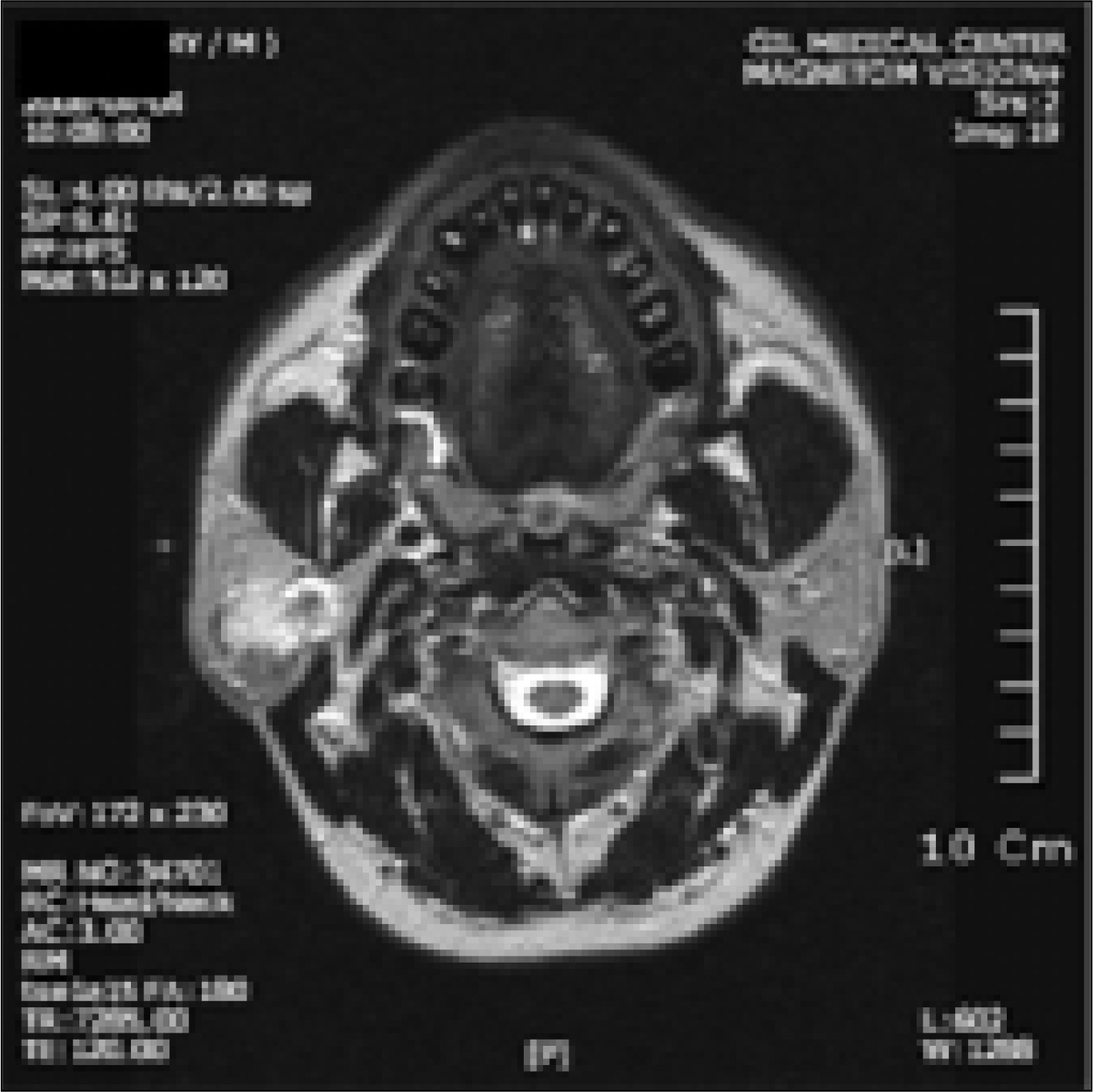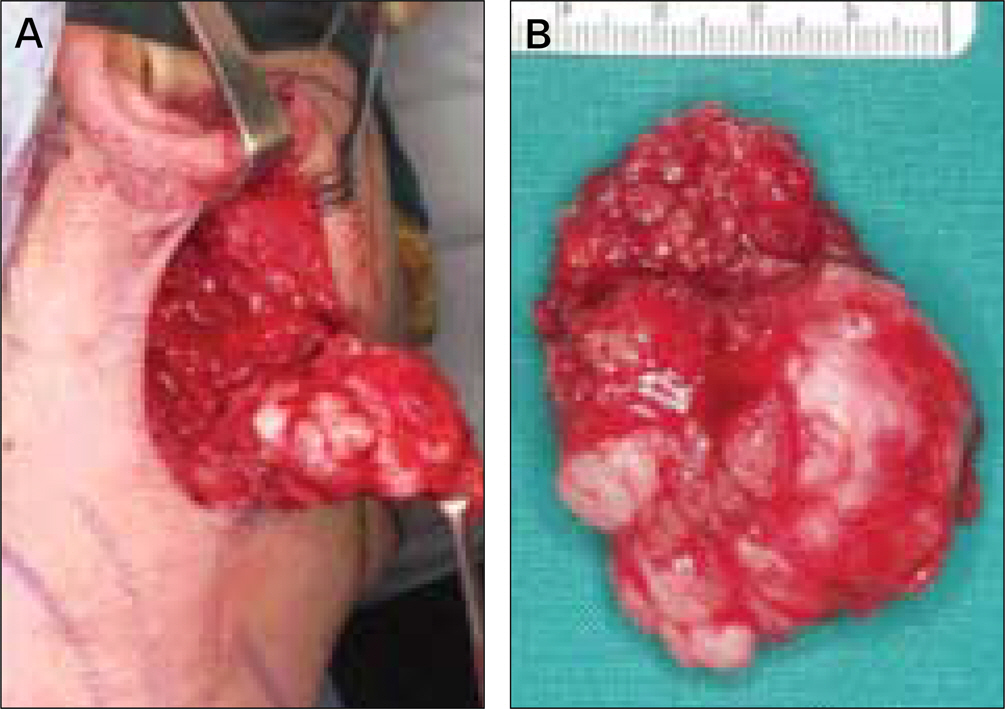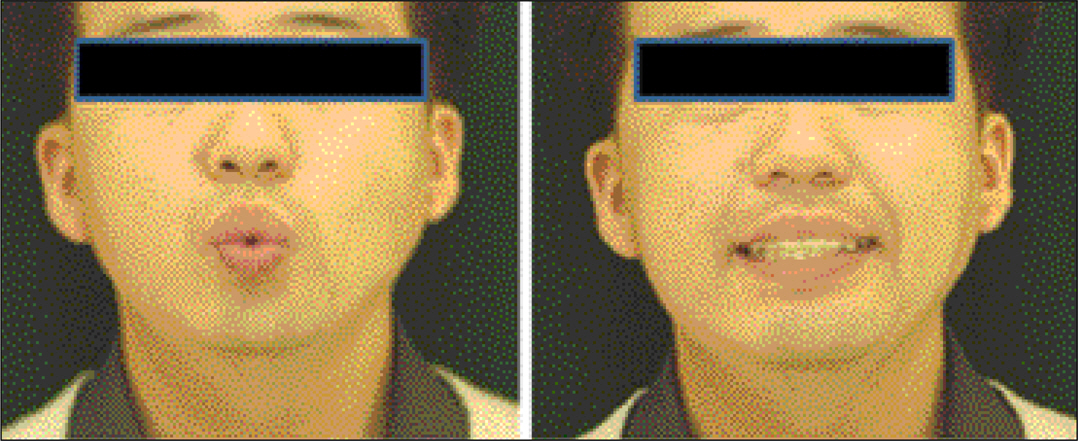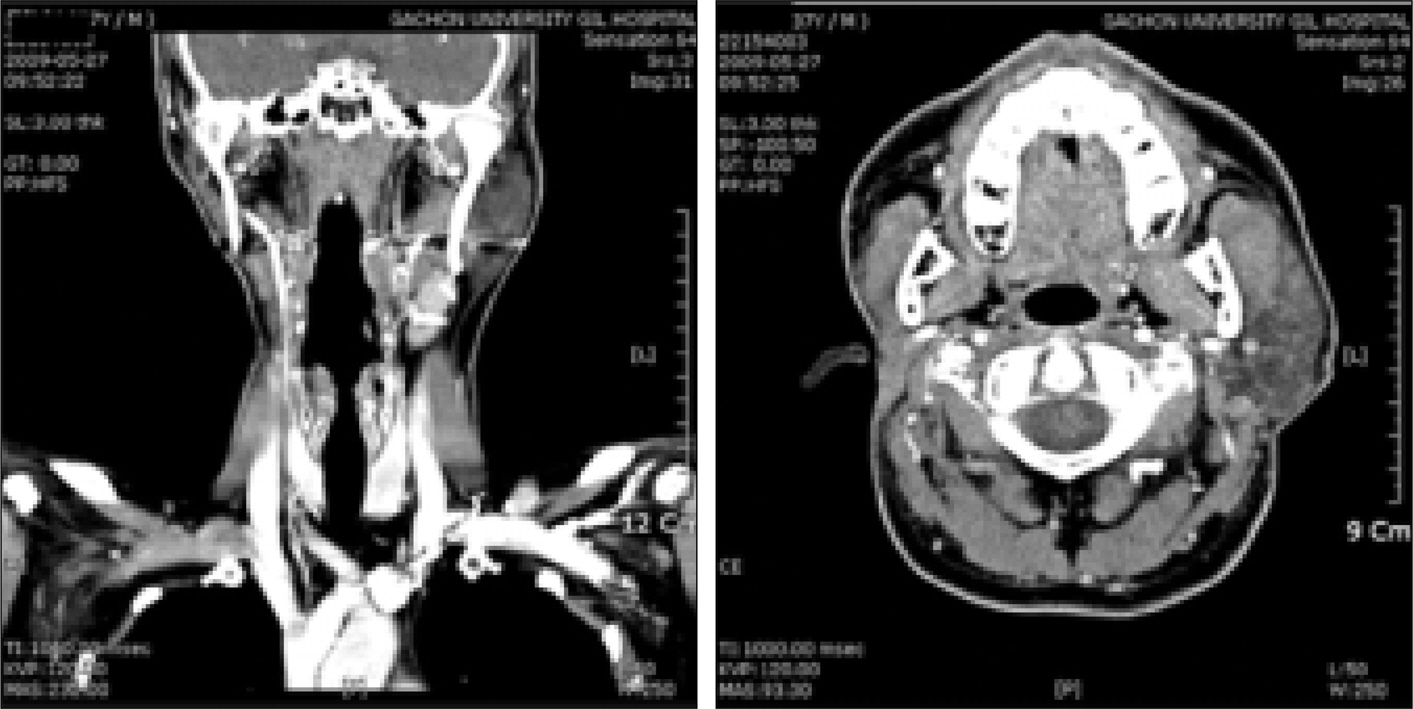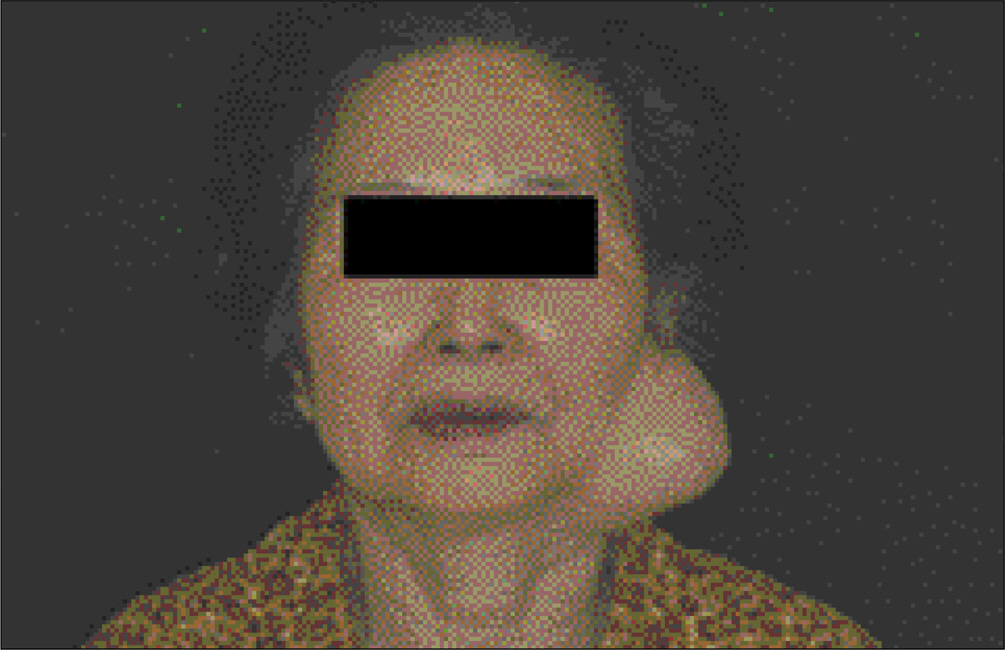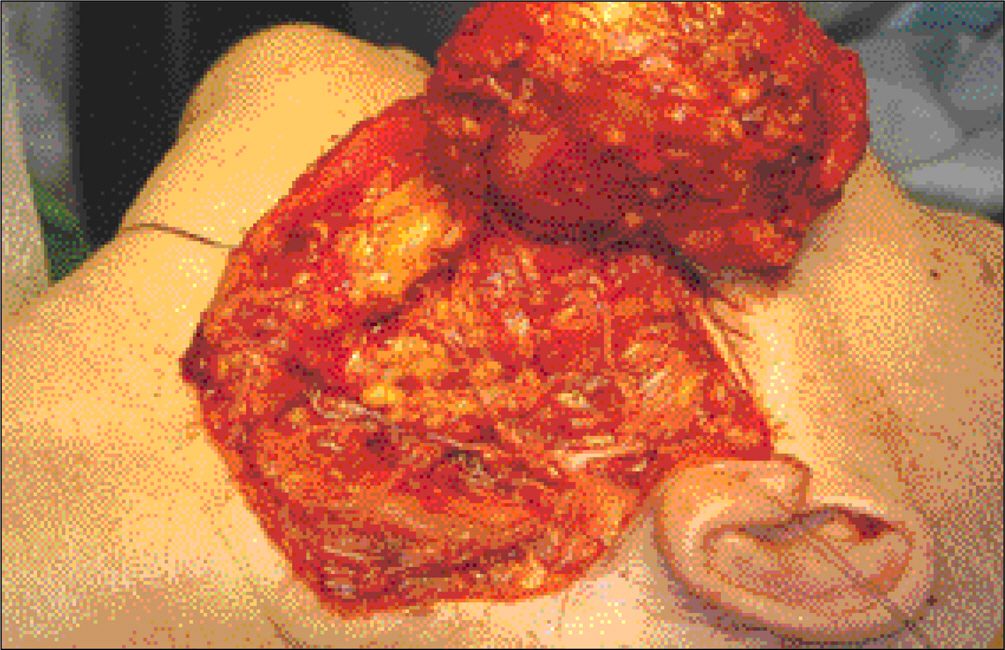J Korean Assoc Oral Maxillofac Surg.
2010 Feb;36(1):53-56. 10.5125/jkaoms.2010.36.1.53.
Carcinoma ex pleomorphic adenoma of the parotid gland: Case report
- Affiliations
-
- 1Departement of Oral and Maxillofacial Surgery, Gil Hospital, Gachon University, Korea. jumincw@hanmail.net
- 2Departement of Oral and Maxillofacial Surgery, Chung-Ang University Hospital, Korea.
- KMID: 1457819
- DOI: http://doi.org/10.5125/jkaoms.2010.36.1.53
Abstract
- Carcinoma ex pleomorphic adenoma is transformed at the incidence of 1-20% in pleomorphic adenoma and frequently recurred. It accounts for 10% of all malignant salivary tumors and its average age of occurrence is 60s. It will present in a large, long-standing pleomorphic adenoma or in one that was previously treated but has recurred. According to cell composition in malignant cell carcinoma, and clear cell adenocarcinoma. Most (75%) occur in parotid gland, while about 20% occur in the minor gland of the oral mucosa. The metastasis rate to regional lymph node is about 25%, and to distant organs about 33% and the 5-year survival rates are 40%. Though the treatment of the carcinoma ex pleomorphic adenoma is not established, it is treated ideally with and extensive resection, neck dissection, postoperative radiotherapy, and chemotherapy. When occurred in parotid gland, facial paralysis is reported. With a review of literatures, we report a case of carcinoma ex pleomorphic adenoma which operated with total parotidectomy and supraomohyoid neck dissection.
MeSH Terms
Figure
Reference
-
References
1. Seifert G. Histopathology of malignant salivary gland tumours. Eur J Cancer B Oral Oncol. 1992; 28B:49–56.
Article2. Genelhu MC, Gobbi H, Soares FA, Campos AH, Ribeiro CA, Cassali GD. Immunohistochemical expression of p63 in pleomorphic adenomas and carcinomas ex-pleomorphic adenomas of salivary glands. Oral oncol. 2006; 42:154–60.
Article3. Henriksson G, Westrin KM, Carlsoo B, Silfversward C. Recurrent primary pleomorphic adenomas of salivary gland origin: intrasurgical rupture, histopathologic features, and pseudopodia. Cancer. 1998; 82:617–20.4. Johns ME, Goldsmith MM. Incidence, diagnosis and classification of salivary gland tumors. Part 1. Oncology (Williston Park). 1989; 3:47–56. discussion 56, 58, 62.5. Zbaren P, Nuyens M, Loosli H, Stauffer E. Diagnostic accuracy of fine-needle aspiration cytology and frozen section in primary parotid carcinoma. Cancer. 2004; 100:1876–83.
Article6. Zbaren S, Caversaccio MD, Stauffer E. Carcinoma ex pleomorphic adenoma: diagnostic difficulty and outcome. Otolaryngol Head Neck Surg. 2008; 138:601–5.
Article7. Lim YC, Lee SY, Kim K, Lee JS, Koo BS, Shin HA, et al. Conservative parotidectomy for the treatment of parotid cancers. Oral oncol. 2005; 41:1021–7.
Article8. Spiro RH. Salivary neoplasms: overview of a 35-year experience with 2,807 patients. Head Neck Surg. 1986; 8:177–84.
Article9. Konno A, Numata T, Nagata H, Terada N, Hanazawa T. Effects of TNM extension and histopathological type of the tumor on long-term survival rates of parotid and submandibular gland cancer. Gan To Kagaku Ryoho. 1997; 24:1347–53.10. Beckhardt RN, Weber RS, Zane R, Garden AS, Wolf P, Carrillo R, et al. Minor salivary gland tumors of the palate: clinical and pathologic correlates of outcome. Laryngoscope. 1995; 105:1155–60.
Article11. Furukawa M, Suzuki H, Matsuura K, Takahashi E, Suzuki H, Tezuka F. Carcinoma ex pleomorphic adenoma of the palatal minor salivary gland with extension into the nasopharynx. Auris Nasus Larynx. 2001; 28:279–81.
Article12. Akan H, Yildiz L, Unal R. Carcinoma ex pleomorphic adenoma of the minor salivary gland with pulmonary metastasis. Diagn Interv Radiol. 2008; 14:3–5.
- Full Text Links
- Actions
-
Cited
- CITED
-
- Close
- Share
- Similar articles
-
- Lumpectomy as a Surgical Treatment of Primary Benign Pleomorphic Adenoma of the Parotid Gland
- High-Grade Mucoepidermoid Carcinoma Ex Metastasizing Pleomorphic Adenomas in the Parotid Gland and Parapharyngeal Space: a Case Report and Literature Review
- Case Report: Intracapsular Carcinoma Ex Pleomorphic Adenoma of Parotid Gland
- High grade carcinoma ex pleomorphic adenoma of parotid gland: a case report
- Ectopic pleomorphic adenoma on subcutaneous plane of the cheek

